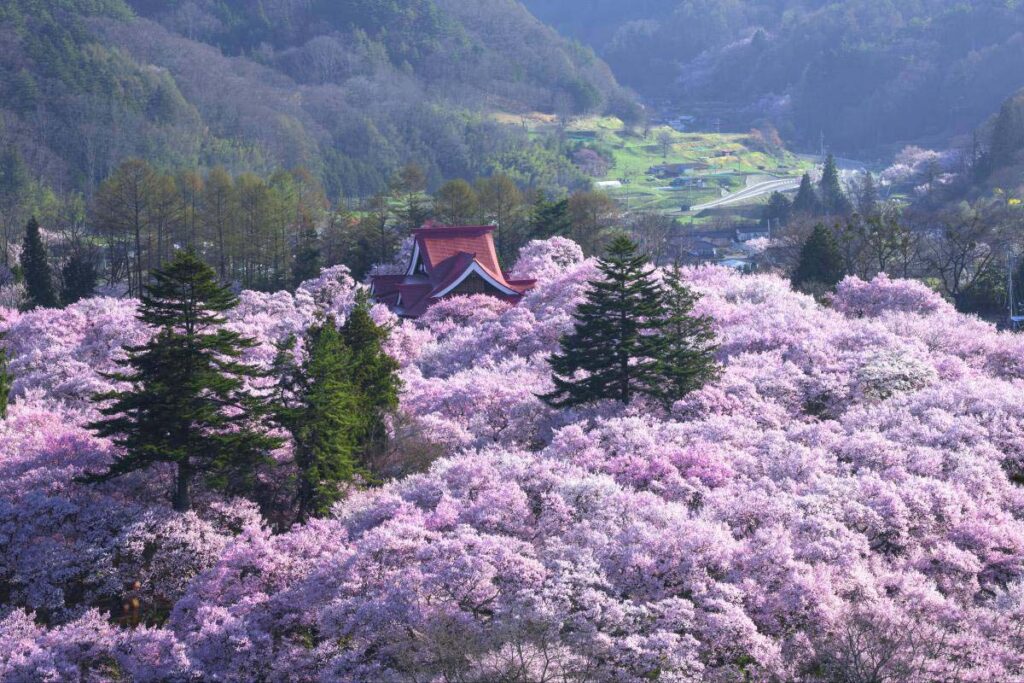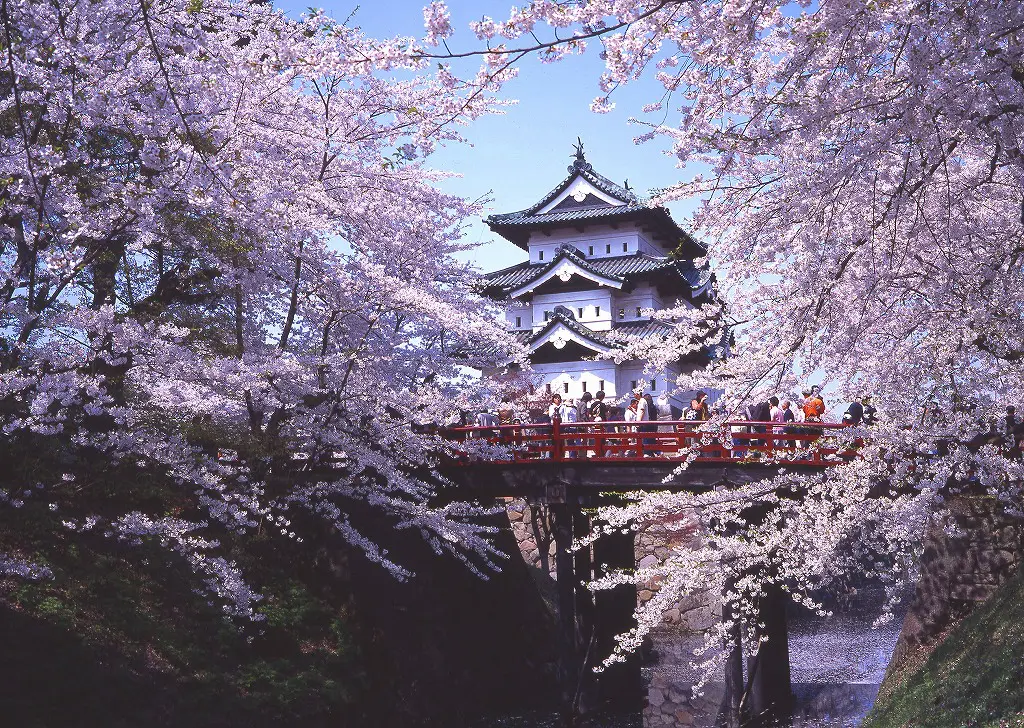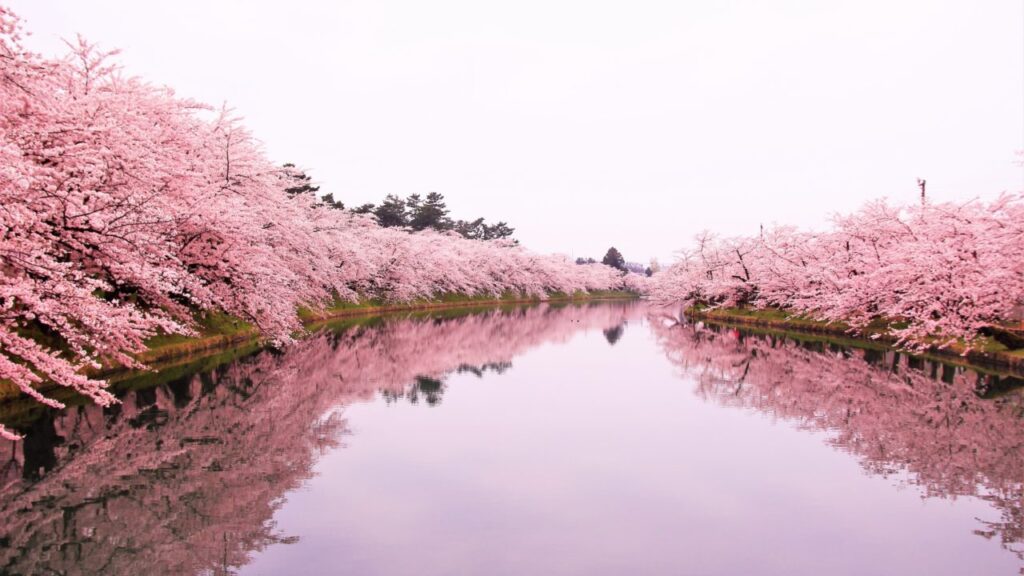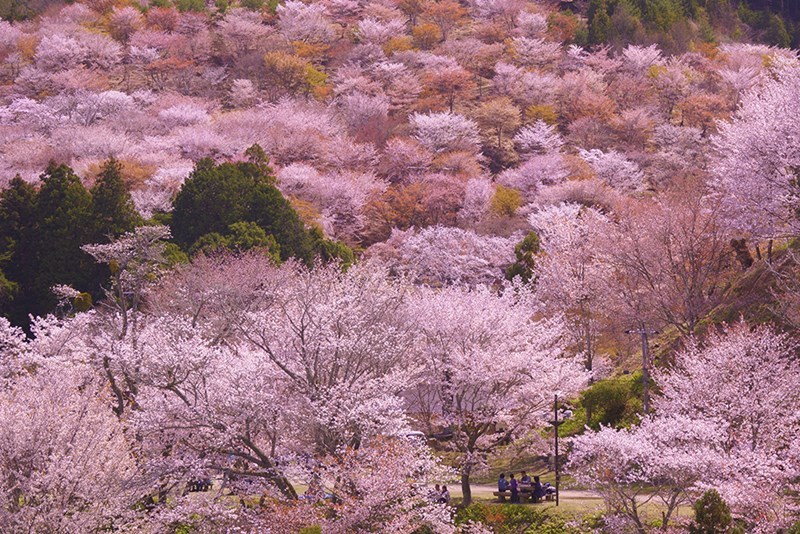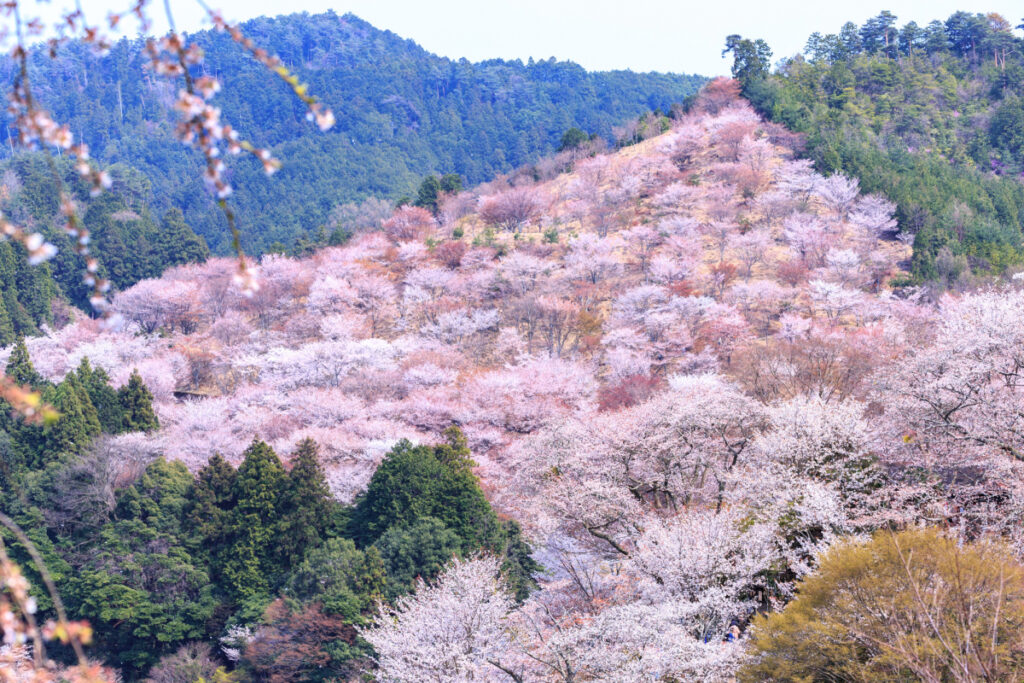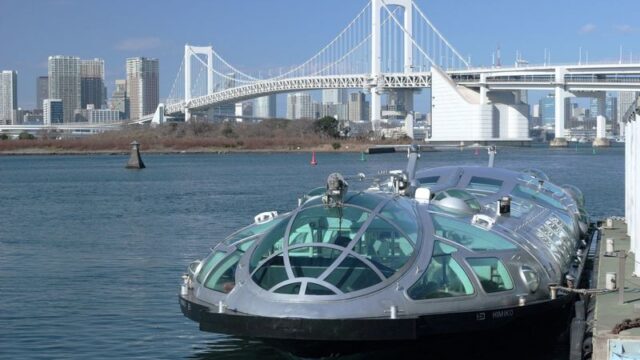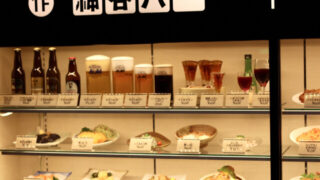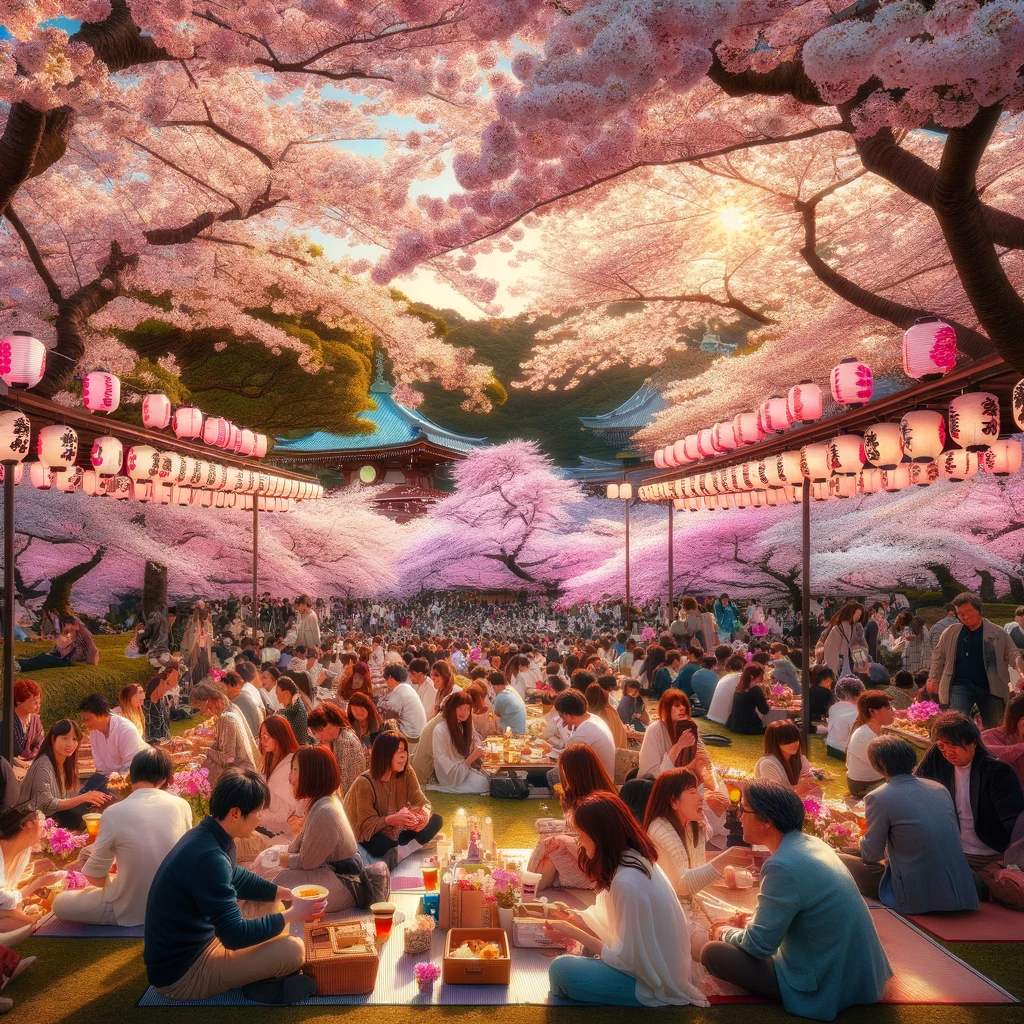
It’s cherry blossom season soon!
I wanna go to really beautiful place in Japan!
Could you recommend me ?
Let’ go together!
Then do Hanami!
I’ll introduse you breathtakingly beautiful 3 places!
Takato Joshi Park, located in Ina City, Nagano Prefecture, is renowned for its cherry blossom season, reputedly one of Japan’s three best locations for cherry blossoms alongside Hirosaki Castle and Yoshinoyama. The park is situated on a hill and features about 1,500 cherry trees of the Kohigan variety, which are known for their pinkish hue. These cherry trees provide a stunning floral display, drawing visitors from all over to admire the blooms.
Features of Takato Joshi Park
- Scenic Beauty: The park’s layout, with its old castle ruins and panoramic views of the surrounding mountains, offers a unique setting. The contrast of the cherry blossoms against the backdrop of the Japanese Alps is particularly stunning.
- Night Illumination: During the cherry blossom festival, the trees are illuminated at night, creating a magical atmosphere. The illuminated cherry blossoms against the night sky draw visitors for evening strolls, making it a popular time to visit.
- Cultural Events: The Takato Cherry Blossom Festival includes cultural performances, traditional music, and other events that celebrate the season and local traditions. These activities provide a deeper insight into Japanese cultural practices.
- Crowds: The beauty of Takato Joshi Park during cherry blossom season attracts large numbers of visitors. While this can make for a lively atmosphere, it’s also wise to plan for potential crowds, especially on weekends and holidays.
- Facilities and Amenities: The park is equipped with visitor facilities, including restrooms and food stalls selling local snacks and refreshments. Picnicking under the cherry trees is a popular activity, allowing visitors to enjoy the scenery at a leisurely pace.
Access from Tokyo
1. Tokyo to Nagano or Matsumoto by Shinkansen
First, you’ll need to take a Shinkansen (bullet train) from Tokyo Station to either Nagano Station or Matsumoto Station. The choice between Nagano and Matsumoto can depend on train schedules, ticket availability, and your personal travel plans.
- Tokyo to Nagano: The Hokuriku Shinkansen goes from Tokyo Station to Nagano Station and takes approximately 1.5 to 2 hours.
- Tokyo to Matsumoto: Take the JR Chuo Line Limited Express from Shinjuku Station to Matsumoto Station. This journey takes about 2.5 hours. Alternatively, you can travel to Nagano and then take a train to Matsumoto, but direct trains to Matsumoto are usually more convenient.
2. Nagano/Matsumoto to Ina City
From Nagano or Matsumoto, you’ll transfer to a local train bound for Ina City. If you’re coming from:
- Nagano: Take the JR Shinonoi Line to Matsumoto Station, then switch to the JR Iida Line for Ina City. The total journey from Nagano to Ina City may take around 3 hours.
- Matsumoto: Board the JR Iida Line directly to Ina City. The travel time is approximately 1.5 to 2 hours.
3. Ina City to Takato Joshi Park
Once in Ina City, you can take a local bus from Ina Station to Takato Joshi Park. The bus ride takes about 30 minutes. Buses are timed to coincide with the cherry blossom season but be sure to check the latest schedules for any changes.
Travel Tips
- Japan Rail Pass: If you have a Japan Rail Pass, it can be used for the Shinkansen and JR lines part of your journey, but not for private rail lines or most buses.
- Plan Ahead: During cherry blossom season, trains and buses can be crowded, and accommodations book up quickly. Reserve your train seats and lodging well in advance.
- Local Information: Check the local tourism board or the park’s official website for the latest information on transportation options, especially regarding bus schedules to Takato Joshi Park, as these can vary by year and season.
This journey offers a blend of Japan’s efficient rail travel with the rural charm of Nagano Prefecture, leading you to one of the country’s most beautiful cherry blossom spots.
Hirosaki Park, located in Hirosaki, Aomori Prefecture, is one of Japan’s top cherry blossom viewing spots. It’s famous for its stunning display of cherry blossoms around Hirosaki Castle. The park is home to around 2,600 cherry trees of over 50 different varieties, offering a breathtaking spectacle of blooms from late April to early May.
Highlights:
- Over 2500 Cherry Trees: The park features an abundance of cherry trees, creating tunnels of blossoms, petal-filled moats, and numerous picturesque picnic areas.
- Diverse Cherry Varieties: With many types of cherry trees, visitors can enjoy a wide range of blossoms, including the famous Somei-Yoshino cherries.
- Rental Rowing Boats: For a unique experience, you can rent a boat to view the cherry blossoms from the moats surrounding Hirosaki Castle.
- Evening Illuminations: The cherry blossoms are illuminated in the evenings, providing a magical nighttime cherry blossom viewing experience.
- Cherry Blossom Festival: The Hirosaki Cherry Blossom Festival is held annually, featuring cultural events and traditional Japanese performances amid the spectacular blossoms.
Access from Tokyo
Actually It’s possible daytrip from Tokyo!
However
leaving early morning
back night time
By Train (Shinkansen and JR Limited Express):
- Take the Shinkansen (Bullet Train) from Tokyo Station to Shin-Aomori Station. This journey typically takes about 3 to 4 hours, depending on the type of Shinkansen service you choose (Hayabusa being the fastest).
- Transfer from Shin-Aomori Station to a JR Limited Express train bound for Hirosaki Station. The journey from Shin-Aomori to Hirosaki takes about 30 to 40 minutes.
This option, while not the cheapest, offers a scenic and comfortable journey to Hirosaki. It’s advisable to consider purchasing a JR Rail Pass if you plan to travel extensively within Japan, as it can offer significant savings.
By Air:
- Fly from Tokyo to Aomori Airport. Flights depart from either Haneda or Narita Airport in Tokyo and take about 1 hour and 15 minutes. JAL and ANA are among the airlines offering this route.
- From Aomori Airport, take a bus to Hirosaki. The bus ride takes approximately 1 hour.
Flying can be faster when considering just the flight time, but when you add in airport wait times and transfers, it may take longer overall compared to the shinkansen and train combination. This option might be preferable if you find a good deal on flights or if you’re located closer to the airport than Tokyo Station.
Regardless of the method you choose, it’s a good idea to check schedules and book tickets in advance, especially during peak travel times like the cherry blossom season, when services can be busier than usual.
Mount Yoshinoyama, located in Nara Prefecture, is Japan’s most renowned cherry blossom viewing spot, celebrated for centuries. It’s believed that the first cherry trees were planted on its slopes over 1300 years ago. Today, the mountain is adorned with approximately 30,000 cherry trees of various types, predominantly the Yamazakura variety. This historic and natural spectacle attracts visitors from all over the world, offering a unique and immersive experience of Japan’s iconic sakura season.
Mount Yoshinoyama, a UNESCO World Heritage Site, is divided into four main areas, each offering a unique cherry blossom viewing experience:
- Shimo Senbon (Lower Thousand): Located at the base of the mountain, this area is home to several parks and Yoshino’s main town, where many of the region’s accommodations and historical sites can be found. The cherry blossoms here bloom earliest, typically starting in early April.
- Naka Senbon (Middle Thousand): This mid-mountain area offers a mix of natural settings and historic sites, including the Yoshimizu Shrine. It’s a popular spot for hanami (flower viewing) picnics under the cherry trees.
- Kami Senbon (Upper Thousand): Situated towards the top of the mountain, this area is less developed and offers more serene and natural surroundings. The cherry blossoms here bloom later than those at lower elevations. The Hanayagura Viewpoint, located in this area, provides panoramic views of the cherry blossoms covering the mountain slopes.
- Oku Senbon (Inner Thousand): The highest part of Yoshinoyama, reaching the summit, is less frequented by casual visitors due to its more remote location. The cherry blossoms here are the last to bloom. This area offers peaceful walking trails and stunning vistas.
The cherry blossom season at Yoshinoyama typically spans from early April to late April, but peak bloom times vary by elevation, with lower areas blooming earlier. During the sakura season, the area is bustling with festivals and events that celebrate the beauty of the cherry blossoms. Visitors can enjoy traditional Japanese culture, including tea ceremonies and performances, against the backdrop of the stunning floral scenery.
Mount Yoshinoyama’s historical significance, natural beauty, and cultural events make it a must-visit destination for those wishing to experience Japan’s cherry blossom season in a truly iconic setting.
How to access
To access Mount Yoshinoyama and enjoy its famous cherry blossoms, here are the general steps and tips:
Location
Mount Yoshinoyama is located in Nara Prefecture, Japan. It’s about 90 minutes to 2 hours from Osaka or Kyoto by public transportation.
Transportation
- From Osaka or Kyoto:
- Take a train to Yoshino Station. The most common route is to take the Kintetsu Railway from either Osaka’s Abenobashi Station (directly connected to Tennoji) or Kyoto’s Kyoto Station to Yoshino Station on the Kintetsu Yoshino Line.
- From Osaka, you can catch the Kintetsu Limited Express train, which takes about 90 minutes to reach Yoshino. From Kyoto, the journey may involve a transfer at Kashiharajingu-mae Station and takes approximately 2 hours.
- At Yoshino Station:
- Yoshino Station is the gateway to Mount Yoshinoyama. From here, you can access the various cherry blossom viewing areas on foot or by bus, depending on their location and your preferences.
- The Shimo Senbon area is easily accessible on foot from Yoshino Station.
- For Naka Senbon, Kami Senbon, and Oku Senbon areas, you might consider taking a bus or the ropeway to save time and energy, especially if you plan to go higher up the mountain.
Tips
- Timing: Check the cherry blossom forecast for Yoshino to plan your visit during the peak bloom. This usually occurs in early to mid-April, but the exact timing can vary each year.
- Accommodation: If you plan to stay overnight, it’s advisable to book your accommodation well in advance, as places can fill up quickly during the cherry blossom season.
- Prepare for Crowds: Yoshinoyama is extremely popular during sakura season. Arrive early if you’re visiting for the day to enjoy the blossoms before the largest crowds arrive.
- Wear Comfortable Shoes: If you plan to explore the different areas, especially the higher ones, wear comfortable walking or hiking shoes.
Visiting Mount Yoshinoyama for the cherry blossom season is an unforgettable experience, offering not just beautiful views but also a deep dive into Japanese culture and history.



